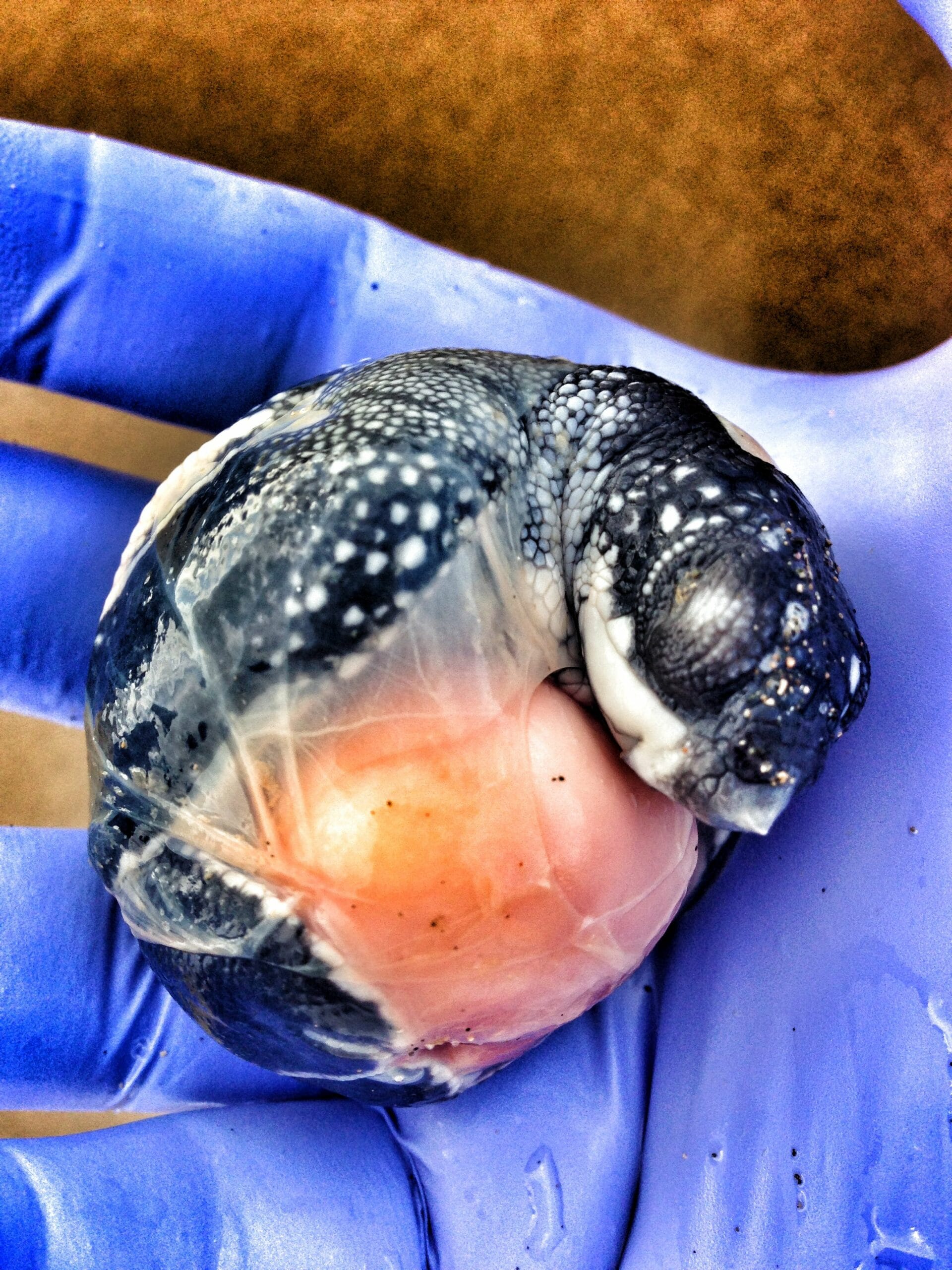Get ready to dive into the underwater world of the leatherback turtle, a creature whose mouth could be straight out of science fiction! Imagine a mouth without teeth, but instead, hundreds of backward-pointing spikes. This is the leatherback’s secret weapon, a marvel of evolution perfectly designed to hunt its slippery, stinging prey: jellyfish. Let’s explore the fascinating world inside a leatherback’s mouth and discover why this unique adaptation is both a blessing and a curse.
A Mouth Like No Other
Have you ever seen the inside of a leatherback turtle’s mouth? Unlike the hard beaks of other turtles, the leatherback’s mouth is surprisingly soft and pliable. But don’t let that fool you; these jaws are powerful, and they come equipped with a secret weapon: hundreds of backward-pointing spikes called papillae. These papillae, made of keratin like our fingernails, line the entire mouth and throat, resembling a cave filled with fleshy stalactites.
These papillae aren’t just for show; they act like a jellyfish jail. Jellyfish, being mostly water, are notoriously good at escaping. However, the leatherback’s mouth has evolved into the perfect trap. The spiky papillae make escape nearly impossible, turning the turtle’s mouth into a one-way street that funnels jellyfish straight into the stomach.
A Closer Look: Papillae and Esophageal Spines
The journey through a leatherback’s mouth is a perilous one for a jellyfish. Once past the initial rows of papillae in the mouth, the jellyfish encounters the esophageal spines. These spines, lining the esophagus (the tube connecting the mouth to the stomach), are even sharper and more spine-like than the papillae, acting as the final hurdle for the jellyfish, ensuring it doesn’t swim back up.
Scientists believe that this intricate system of papillae and esophageal spines evolved as a direct response to the leatherback’s diet. Jellyfish, while plentiful, are not the easiest prey to consume. The papillae and esophageal spines work in tandem to ensure that the leatherback can efficiently capture and swallow these gelatinous creatures without the need for teeth.
A Design Flaw? The Plastic Problem
As fascinating as this specialized mouth is, it also makes leatherbacks incredibly vulnerable. Sadly, plastic bags floating in the ocean closely resemble jellyfish, and leatherbacks can easily mistake them for food. Eating plastic can be deadly for these creatures, causing blockages in their unique digestive system and leading to starvation.
Unveiling the Secrets: Ongoing Research
Scientists are hard at work studying the leatherback’s amazing mouth, unraveling the secrets of its design and learning more about how these ancient mariners feed. By understanding this intricate adaptation, we gain valuable insights into not just the leatherback’s survival, but also the challenges they face in our rapidly changing oceans. For more information on the threats to leatherbacks, visit our detailed page here. Also, check out our article on orca eating moose, which includes amazing captures here.
Key Points:
- Leatherback turtles have squishy mouths lined with backward-pointing spikes called papillae.
- The papillae help trap jellyfish, their primary prey, by acting like a one-way street.
- This adaptation makes leatherbacks vulnerable to plastic bags, which resemble jellyfish.
- Scientists believe that the leatherback’s mouth and throat evolved specifically to capture and consume jellyfish.
- Research on the leatherback’s mouth helps us understand the challenges these animals face and informs conservation efforts.
- Unlock Water’s Symbolism: A Cross-Cultural Exploration - April 20, 2025
- Identify Black and White Snakes: Venomous or Harmless? - April 20, 2025
- Unlocking Potential: Origins High School’s NYC Story - April 20, 2025
















1 thought on “Beyond the Shell: Unveiling the Secrets of the Leatherback Turtle’s Mouth”
Comments are closed.